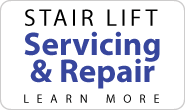 Being able to utilize one's automobile for towing can be of great benefit. For the family that owns a boat or camper, or regularly travels with a loved one who has a mobility scooter or power wheelchair, it is important to understand trailer hitch classes and how to properly and correctly install them.
Being able to utilize one's automobile for towing can be of great benefit. For the family that owns a boat or camper, or regularly travels with a loved one who has a mobility scooter or power wheelchair, it is important to understand trailer hitch classes and how to properly and correctly install them.
For automobiles, there are three main hitch classes. These all vary in the type of receiver and the amount of weights that can be pulled.
A Class One (I) receiver has a Gross Trailer Weight (GTW) of up to 2000 pounds. This type of receiver will fit on all types of vehicles. This receiver is perfect for smaller cars, pickups or minivans and is generally used to carry bicycle racks, camping racks and other light towing items. If only a small rack is going to be used on this receiver, there is no need to set up a wiring harness.
A hitch that is rated as Class Two (II) is able to pull up to 3000 pounds GTW. This is ideal for larger cars, vans, full-size pickup trucks and SUVs. A class two hitch is generally used to pull a snowmobile trailer, small boat trailer, camper or motorcycle trailer.
A class three (III) hitch is able to pull up to 5000 pounds GTW. This is essential for pulling midsize campers and boats, and can be utilized on midsize pickup trucks, vans and SUVs. This class of hitch may not work on all automobiles.
When one needs to determine the type of hitch for the vehicle, it is important that this is done carefully. The rating of the vehicle and its towing capacity should never be exceeded. Knowing this capacity will help to choose the correct class of hitch.
Along with the hitch classification, a ball mount is needed as well. This goes inside of the receiver and there are generally three different styles of mounts. Depending on the trailer that is being pulled, the correct mount must be utilized to pull it. If this is not done, there can be an extreme angle between the trailer and the vehicle. This can cause trailer sway and potentially cause damage to both the vehicle and the trailer. The ball mount drop will need to be calculated to determine which style to utilize.
Safety is incredibly important. Because of this, the trailer hitch must always be appropriate for the load being pulled. Also, if you are unsure about installation of the hardware, a reputable installer should take care of this. With the correct class of trailer hitch, you will be able to have a more versatile vehicle.
AmeriGlide manufactures vehicle lifts and trailers for your mobility scooter or power wheelchair which are compatible with multiple hitch and receiver classes. Click here to view our full selection of lifts and carriers for wheelchairs and scooters!
ALSO SERVING
Bartlett
Collierville
Jackson
Understanding Trailer Hitch Classes
Call to Speak to an Expert

